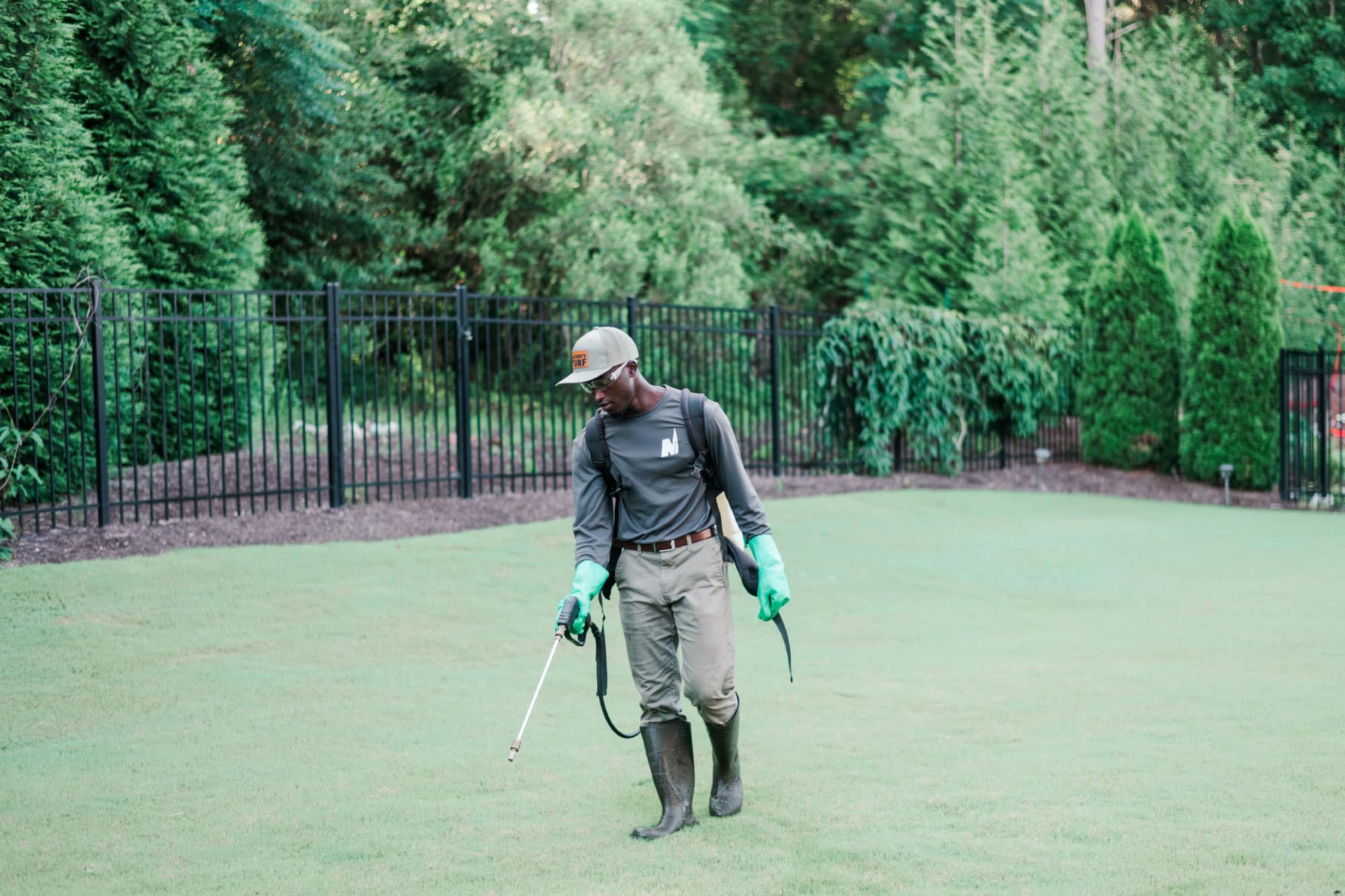Annual? Perennial? Which ones last just one year, and which ones come back–whether we want them to or not? Plant classification can be a bit overwhelming. Since we don’t typically use these words in our everyday lives, the terms can be confusing. One of the primary ways we categorize plants is by their expected lifespan. For these purposes we use the following three terms:
- Annual – Plants classified as annuals emerge from seed, mature, and complete their life cycle in a single season or year; annuals live for 1 year. Examples of annual weeds in our Metro-Atlanta lawns include crabgrass, henbit, Poa annua, and doveweed.
- Biennial – While less common than annuals and perennials, biennials have a two-year life-cycle, generally germinating in the first year and maturing to produce flowers in the second; biennials live for 2 years Dandelion is traditionally considered a biennial and can commonly be found in our area.
- Perennial – This term applies to many desirable and undesirable plants. The trees in our yards, the shrubs that frame our homes, and the turf we care for are all perennial plants; perennials live for more than 2 years–sometimes hundreds of years. Unfortunately, some perennials pop up where we don’t want them. Weeds such as yellow nutsedge, dallisgrass, and virginia buttonweed are all perennials.
What Makes Annual Weeds Challenging?
Even though pre-emergent weed control products are designed to control annual weeds, certain traits of some annual weeds can make control challenging–even with a well-designed program. Most widely used pre-emergent weed control products stop root formation when a plant germinates (emerges from seed). Those products aren’t selective in this process, however, meaning that all plants are susceptible, right? Not entirely. Let’s discuss why.
Many annual weeds produce a prolific number of seeds, and many variations can occur. Weeds like crabgrass or poa, if untreated over the course of a couple of seasons, can spread in unbelievable numbers, with populations growing exponentially. Over time, our pre-emergent controls are exposed to innumerable unique variations of these weeds, some of which won’t be harmed by our control measures. This is a process called selection, and selection can result in a weed that is no longer regulated by our pre-emergent weed control products. By strategic use of available pre- and post-emergence weed control products, this process can be slowed but not stopped. Eventually, all pre-emergents become less effective on key weeds.
Other natural challenges are based on habitual or physical traits of individual weeds. Goosegrass and doveweed, for example, germinate very late compared to crabgrass. Pre-emergents have an effective service life in the environment. Weeds that germinate later in the season may emerge after our control measures have been degraded by weather, heat, or light. Other annuals, such as spurge, have a taproot that only requires a small void in the pre-emergent barrier to establish roots. Once annuals flower, they cease growing as rapidly as they did at germination, meaning the opportunity to injure them decreases, and the time it takes them to express injury is prolonged.
What Makes Perennial Weeds Challenging?
Since pre-emergent weed control products are designed to stop weeds from forming roots at germination, they can’t get rid of perennial weeds that already have roots in the landscape. It’s actually good news that pre-emergents don’t kill dallisgrass because that means they would probably also kill your bermudagrass. That doesn’t mean having perennial weeds isn’t frustrating, though.
Weeds like nutsedge, dallisgrass, broomsedge, and virginia buttonweed have underground structures. Examples are nutlets in the case of sedges, or rhizomes in the case of virginia buttonweed. These structures store energy, enabling them to go dormant like our bermudas and zoysias, and returning when weather is ideal. Unfortunately, these structures are modified roots, which means they are attached to existing feeders and hairs.
Controlling perennial weeds is often a combination of cultural practices, post-emergent weed control applications, and physical removal. Over time, a combination of these activities can rid your lawn of these ugly, unwanted plants. It just takes a little patience and elbow grease.
What Can I Do about the Challenging Weeds?
Knowledge is power. Teaming up with Nature’s Turf or a trusted lawn care company in your area gives you and your yard access to knowledge and products that are unavailable otherwise. A combination of our programs, our trained and skilled service team, and a group of diligent professionals aim to provide you with the best we can offer in weed control and knowledge for how control of even the most challenging weeds can be met. Feel free to give us a call at (678) 831-6343, or send us an email. We’d be glad to discuss control strategies and how our services fit into your plan for the yard you’ve always wanted.








